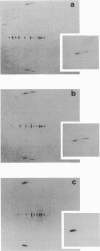Abstract
X-ray diffraction has been applied to determine the various tilt angles and directions (if any) which can be assumed by oriented gel phase multilayers of dipalmitoyl phosphatidylcholine (DPPC) as a function of hydration. We report for the first time that oriented DPPC multilayers with a repeat spacing (d-spacing) of 55.2A at 25 degrees C and 0% relative humidity (RH) have hydrocarbon chains tilted at an angle theta of 21.5 degrees with respect to the bilayer normal. In addition, the chains are tilted along one of the bisectors (omega = 0 degrees) of the hexagonal lattice (8 wide-angle maxima, 2 unique), a phase not previously reported in DPPC studies. At 100% RH, the chain tilt angle and d-spacing increased to approximately 29.0 degrees and 58.9A, respectively. Since at 100% RH only 4 wide-angle maxima are observed, we analyze the data on the assumption that the hydrocarbon chains may rotate independently of the hexagonal lattice (omega = 0-30 degrees), at a fixed chain tilt angle theta (Stamatoff, J.B., et al. 1979. Biophys. J. 25:253-262). The largest observed angle phi made by the wide-angle maxima with the equator is 29.5 degrees corresponding to a theta of approximately 32.6 degrees (omega avg. = 24 degrees) and the sample having a d-spacing of 64.0 A (excess water condition). Finally, theta remains relatively constant (approximately 21.5 degrees) up to a RH of approximately 45% and a d-spacing of 57.8A, after which, with increases in RH, theta increases to a maximum of 32.6 degrees.
Full text
PDF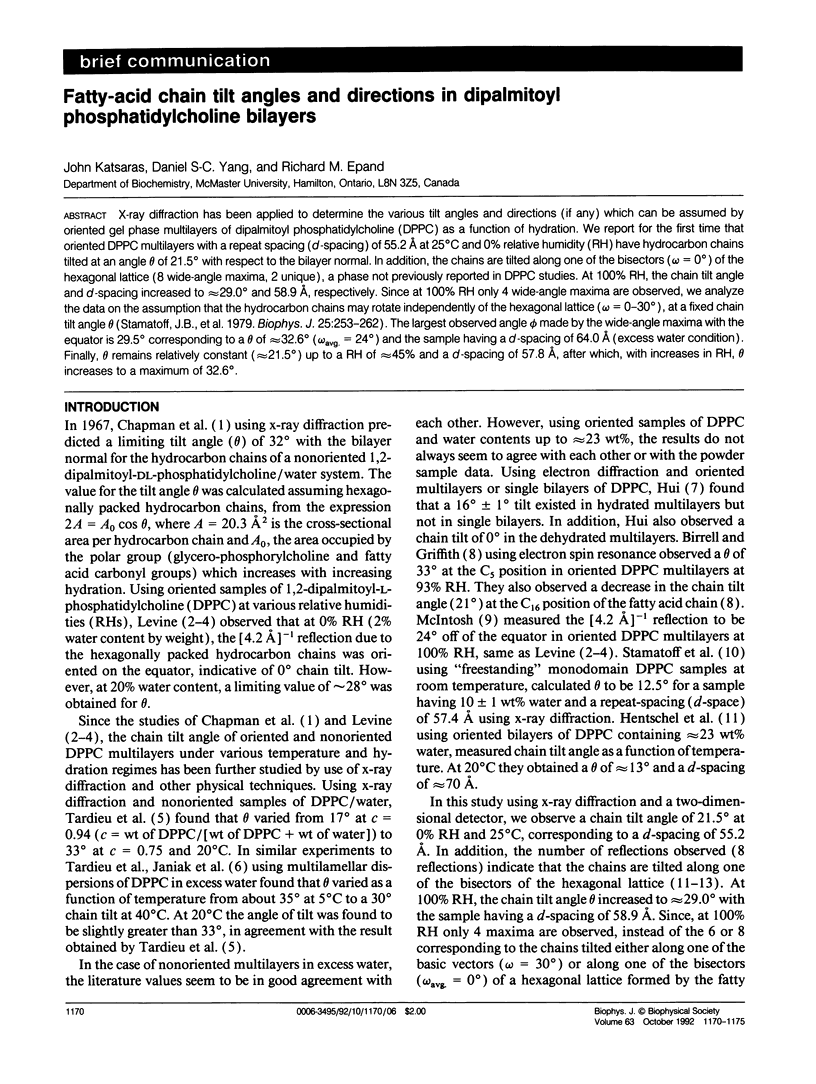
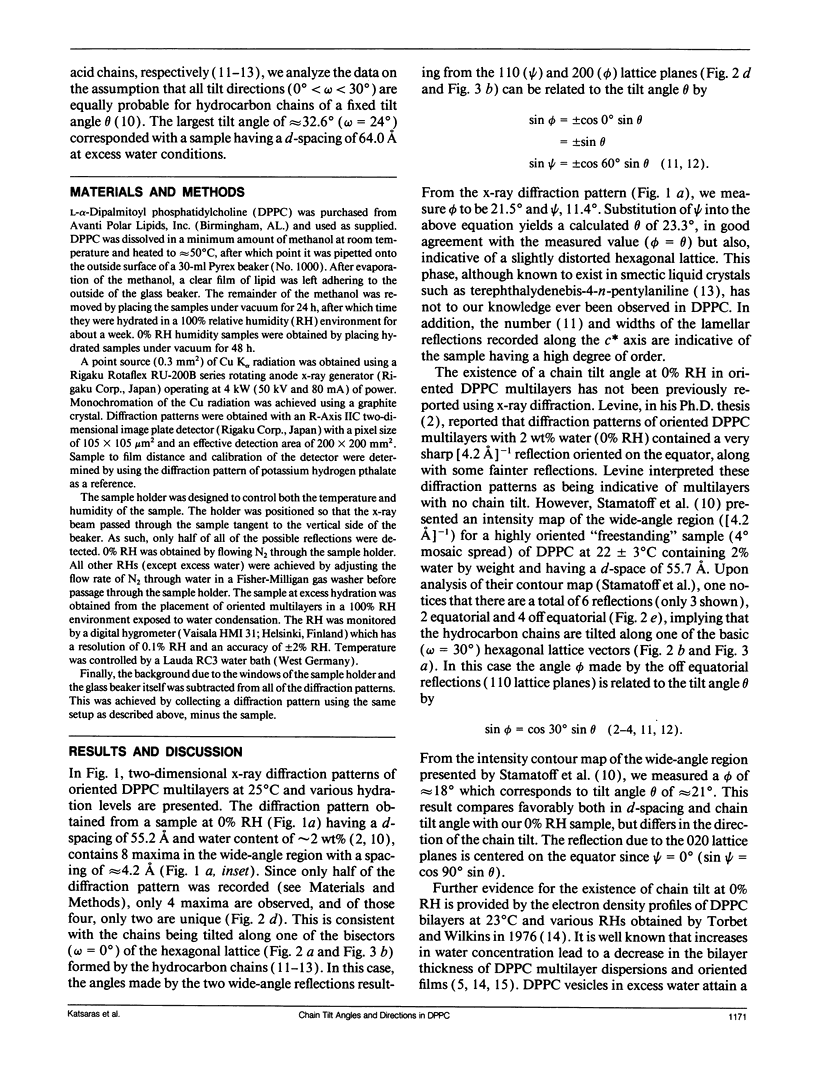
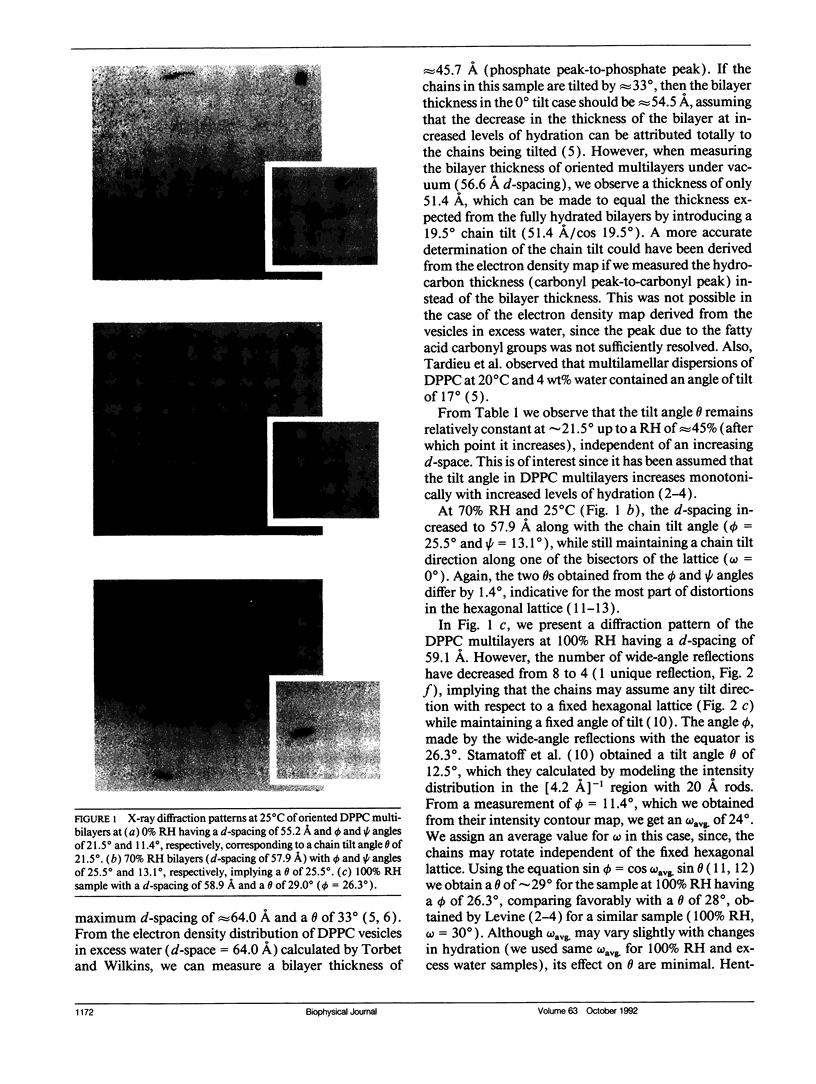
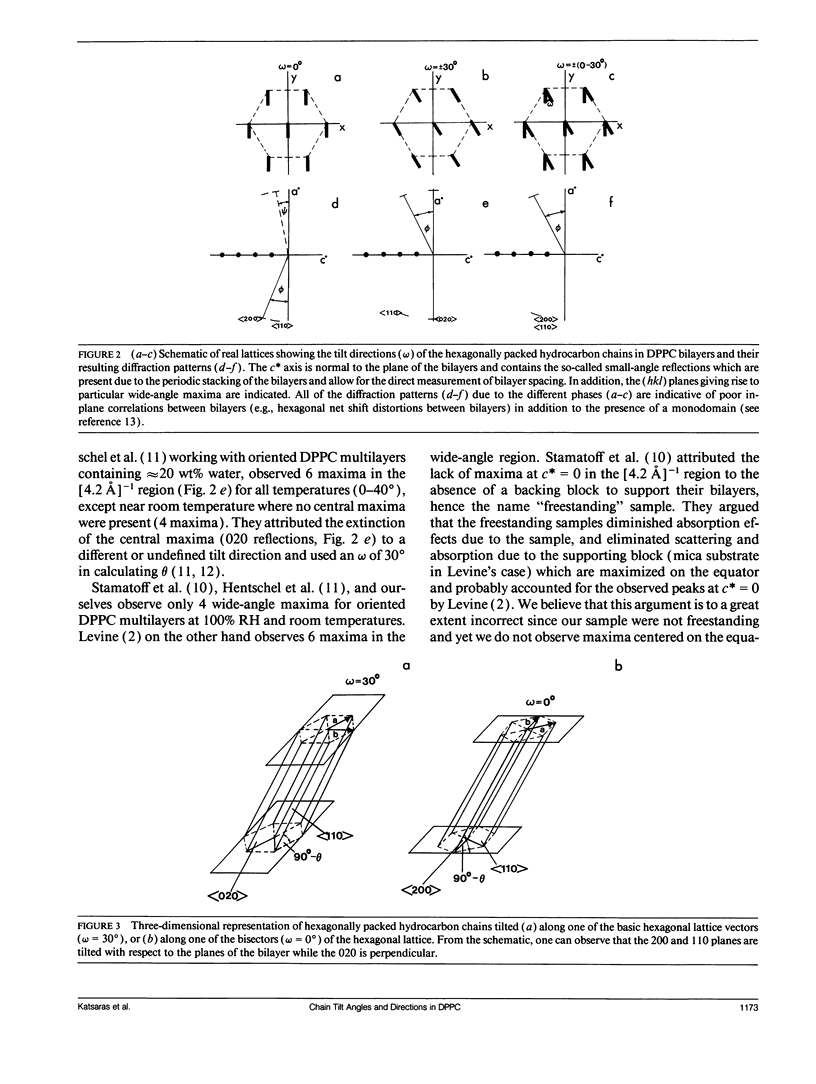
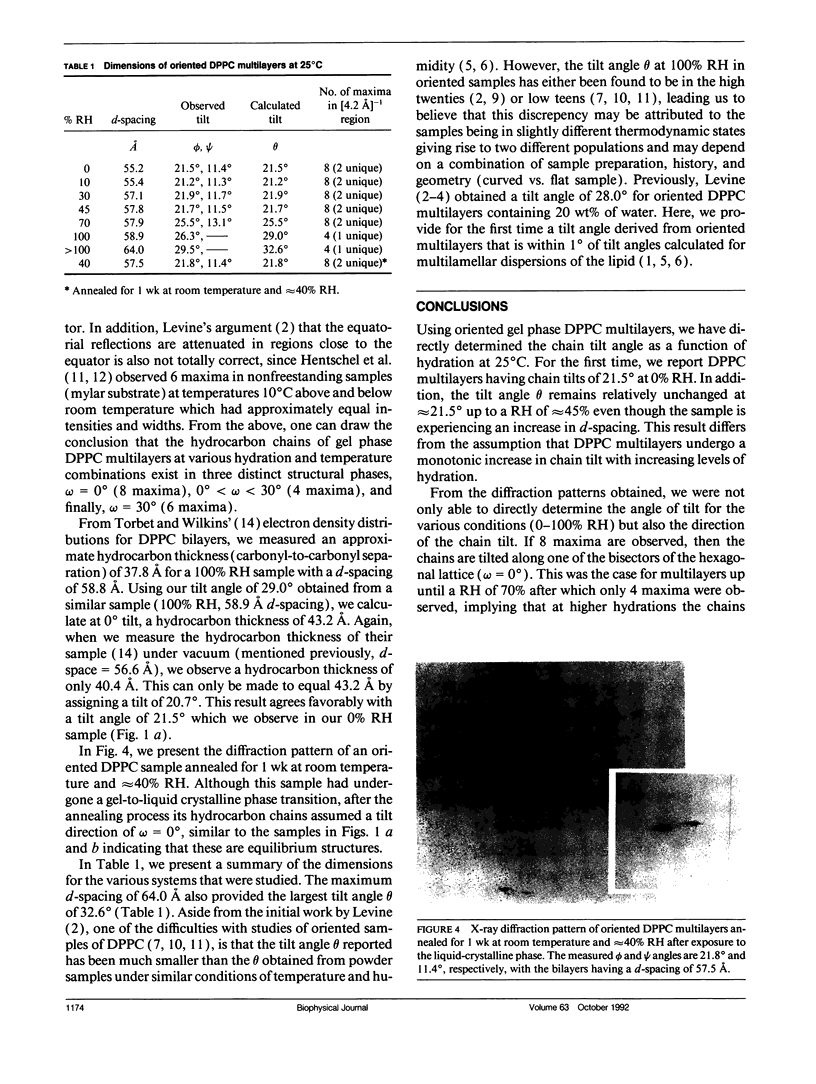
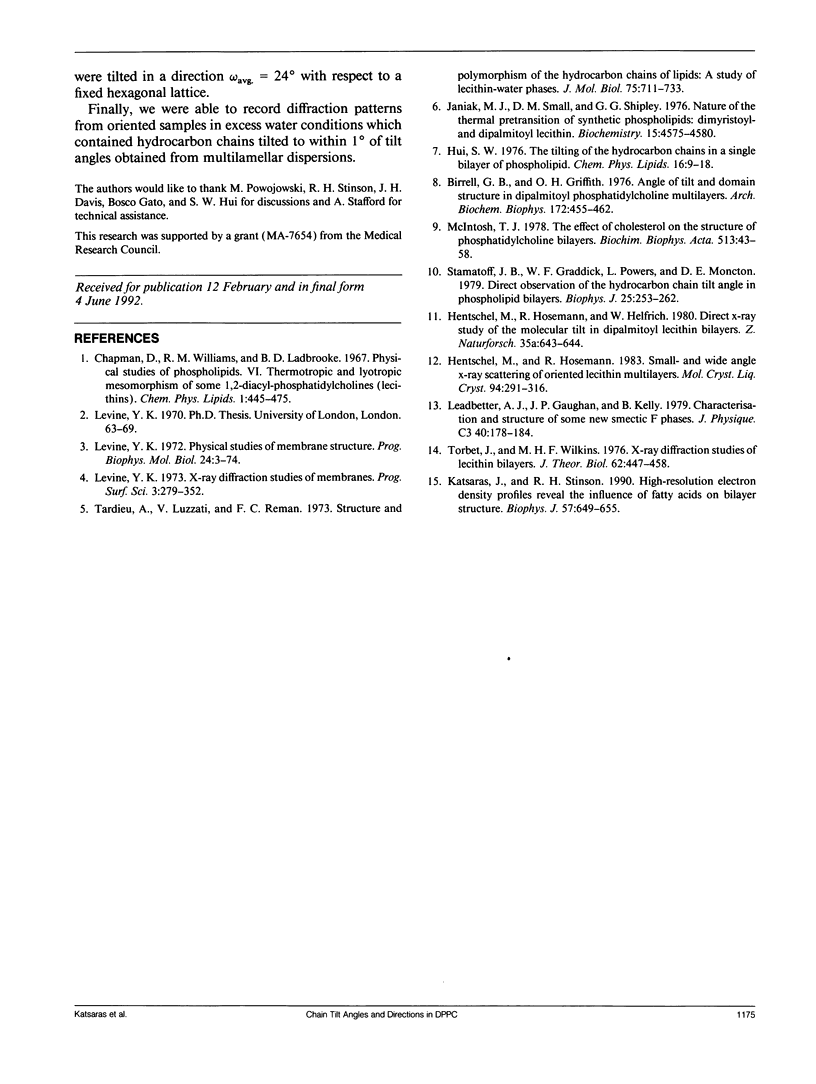
Images in this article
Selected References
These references are in PubMed. This may not be the complete list of references from this article.
- Birrell G. B., Griffith O. H. Angle of tilt and domain structure in dipalmitoyl phosphatidylcholine multilayers. Arch Biochem Biophys. 1976 Feb;172(2):455–462. doi: 10.1016/0003-9861(76)90098-9. [DOI] [PubMed] [Google Scholar]
- Hui S. W. The tilting of the hydrocarbon chains in a single bilayer of phospholipid. Chem Phys Lipids. 1976 Feb;16(1):9–18. doi: 10.1016/0009-3084(76)90011-6. [DOI] [PubMed] [Google Scholar]
- Janiak M. J., Small D. M., Shipley G. G. Nature of the Thermal pretransition of synthetic phospholipids: dimyristolyl- and dipalmitoyllecithin. Biochemistry. 1976 Oct 19;15(21):4575–4580. doi: 10.1021/bi00666a005. [DOI] [PubMed] [Google Scholar]
- Katsaras J., Stinson R. H. High-resolution electron density profiles reveal influence of fatty acids on bilayer structure. Biophys J. 1990 Mar;57(3):649–655. doi: 10.1016/S0006-3495(90)82583-2. [DOI] [PMC free article] [PubMed] [Google Scholar]
- Levine Y. K. Physical studies of membrane structure. Prog Biophys Mol Biol. 1972;24:1–74. doi: 10.1016/0079-6107(72)90003-x. [DOI] [PubMed] [Google Scholar]
- McIntosh T. J. The effect of cholesterol on the structure of phosphatidylcholine bilayers. Biochim Biophys Acta. 1978 Oct 19;513(1):43–58. doi: 10.1016/0005-2736(78)90110-4. [DOI] [PubMed] [Google Scholar]
- Stamatoff J. B., Graddick W. F., Powers L., Moncton D. E. Direct observation of the hydrocarbon chain tilt angle in phospholipid bilayers. Biophys J. 1979 Feb;25(2 Pt 1):253–261. doi: 10.1016/s0006-3495(79)85289-3. [DOI] [PMC free article] [PubMed] [Google Scholar]
- Tardieu A., Luzzati V., Reman F. C. Structure and polymorphism of the hydrocarbon chains of lipids: a study of lecithin-water phases. J Mol Biol. 1973 Apr 25;75(4):711–733. doi: 10.1016/0022-2836(73)90303-3. [DOI] [PubMed] [Google Scholar]
- Torbet J., Wilkins M. H. X-ray diffraction studies of lecithin bilayers. J Theor Biol. 1976 Oct 21;62(2):447–458. doi: 10.1016/0022-5193(76)90129-6. [DOI] [PubMed] [Google Scholar]



